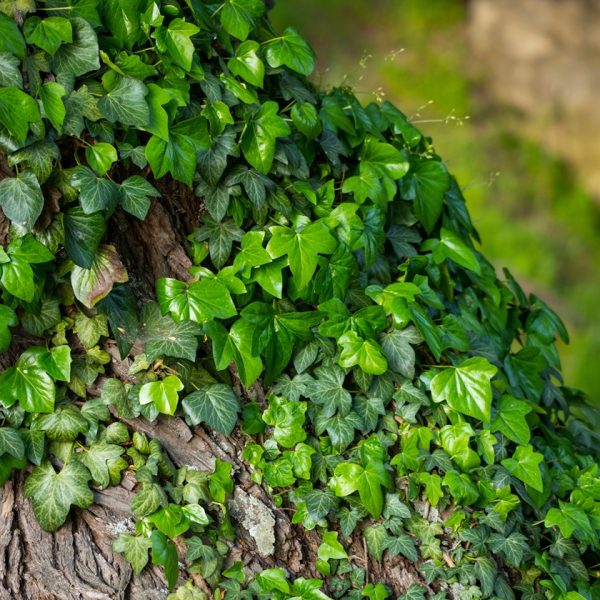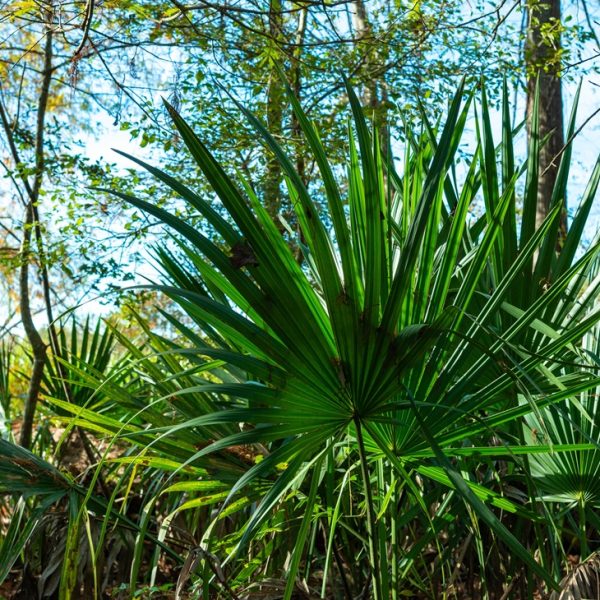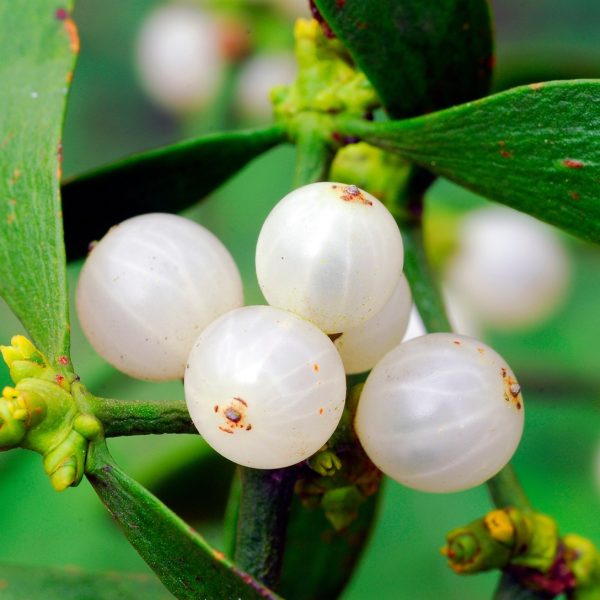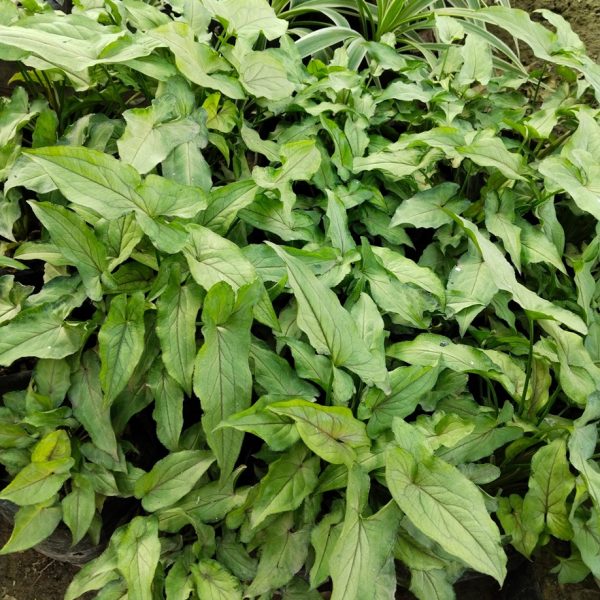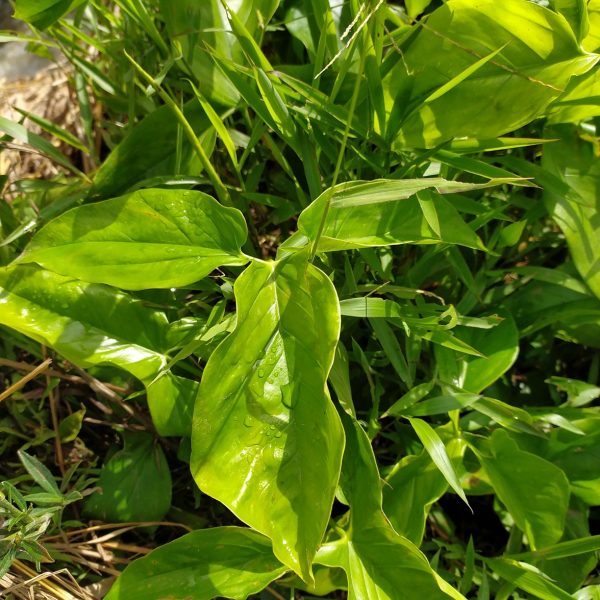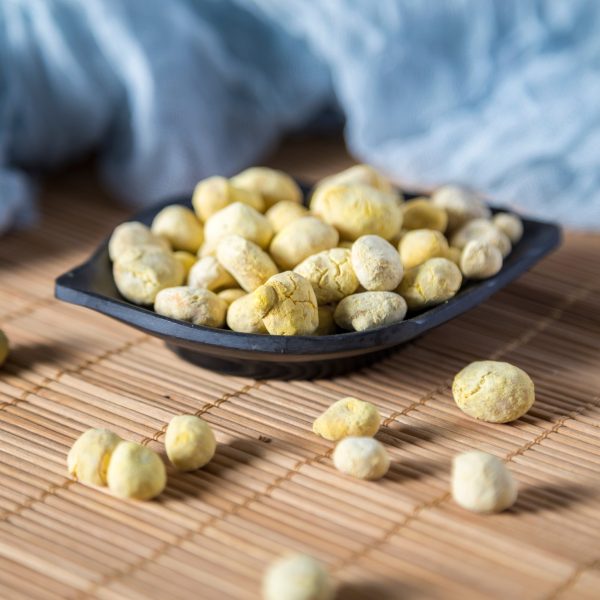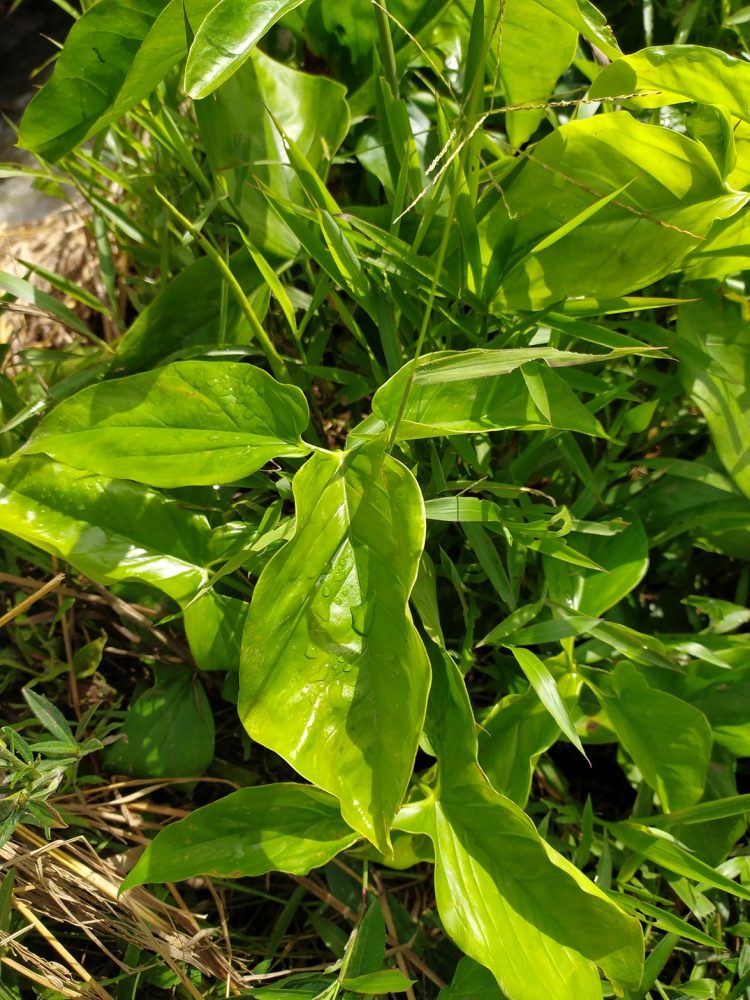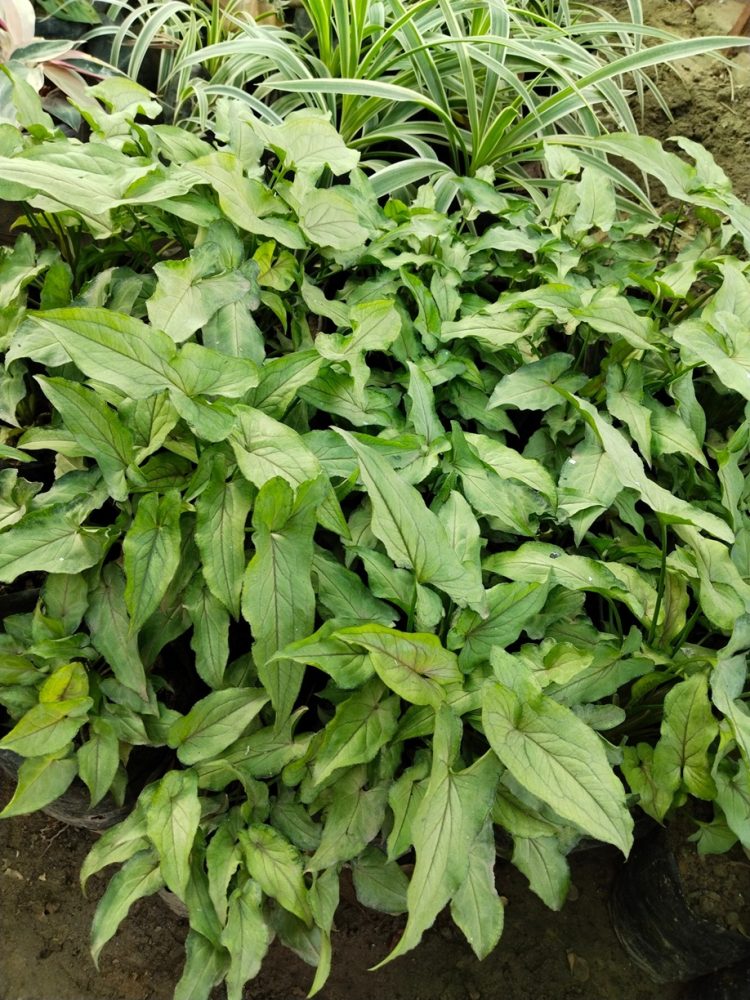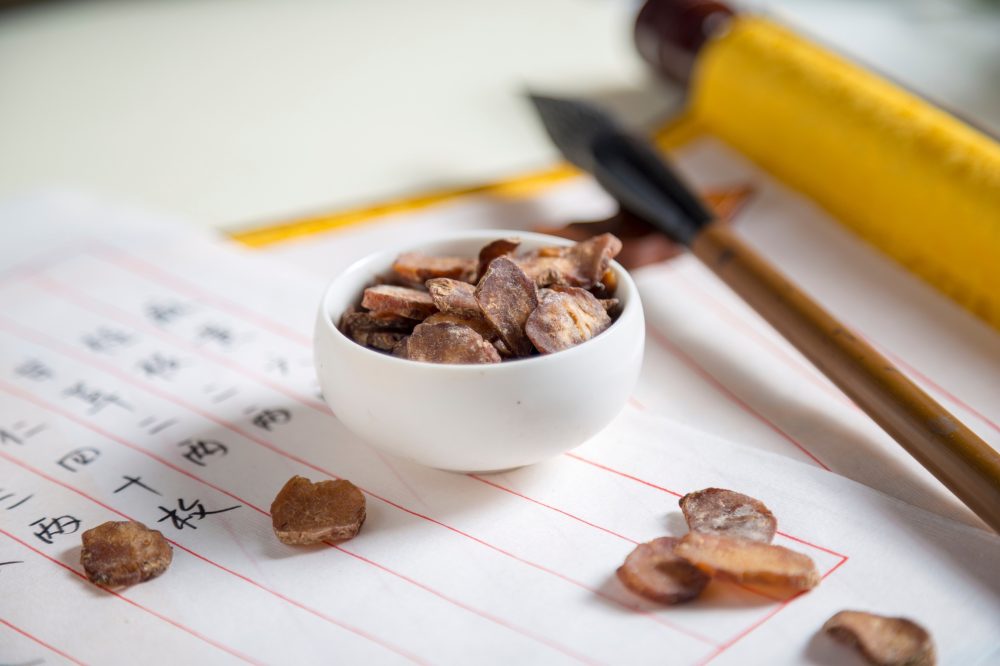-
How does it feel?
Pinellia has a mild and fragrant aroma with spicy, woody notes due to the essential oil content. The taste is pungent with underlying bitter tones, upon tasting the astringent qualities come through in the mouth, felt as a drying effect.
Pinellia is an especially dispersing and drying herb, yet also slippery with a downward draining action (1). Pinellia’s warming effect can be felt upon tasting, as the effect spreads downwards throughout the digestive tract.
-
What can I use it for?
Pinellia is primarily used for coughs with thin, watery sputum and a stifling sensation in the chest, or for epigastric and abdominal distention, nausea and vomiting (1). Its dispersing and warming properties can help dry fluids directly, and its slippery nature can help loosen stubborn phlegm and direct it downwards, where it can be eliminated through the urine or the stool.
Other traditional indications for pinella include nodules, swellings and subjective sensations of distention anywhere in the body, which are perceived as phlegm accumulations. It can also treat insomnia with racing thoughts, which can be understood as a manifestation of phlegm that obstructs the process of the qi turning inward at night (1).
It can also be used topically on sores, skin ulcers, carbuncles and breast abscesses (2).
-
Into the heart of pinellia

Pinellia (Pinellia ternata) The name ban xia (半夏 pronounced “ban-shah”) means “half summer” referring to the time of year around the summer solstice when pinellia tubers can first be harvested (3). This is also the time of year when nature’s qi is moving downwards and inwards, just as the energetic actions of the herb are to direct qi downwards and inwards, countering the upwards and outwards movements of cough and vomiting. This action, along with its dispersing properties, has made pinellia one of the primary herbs for treating dampness and phlegm in Chinese medicine.
The Chinese term for phlegm (痰tan) is not a straightforward translation and can refer to much more than the sticky substance that is produced in the lungs during a respiratory infection. It is more closely related to the Ayurvedic concept of phlegm (śleṣman) as an imbalance or corruption of the kapha dosha and waste product of digestion. It was most likely carried into China with Buddhist teachings where it influenced existing concepts of fluid pathology (5). Once imported into Chinese medicine, phlegm was understood as the result of a disruption in fluid metabolism that may accumulate anywhere in the body, cooking until it thickens into something viscous, or even solid, that obstructs normal function, resulting in an array of complex symptoms (6). Phlegm can:
- Block the channels resulting in joint pain, swelling and nodules, or cause numbness and paralysis in parts of the body.
- Accumulate in the stomach leading to loss of appetite, vomiting, distension and epigastric pain.
- Create both subjective and physical lumps in the throat.
- Gather in the intestines, where it may cause constipation or diarrhoea.
- Ascend to the head, obscuring the senses, resulting in dizziness and sensory disturbances.
- Affect the Heart where it may cause palpitations and unsettle the Spirit leading to insomnia, psychological disorders, and in extreme cases even convulsions and loss of consciousness.
This makes pinellia a very important herb, not just for clearing visible phlegm in the chest, but also for treating almost any stubborn, complex presentation by helping to resolve phlegm directly, and the root cause of disrupted fluid metabolism that leads to phlegm.
-
Traditional uses
Pinellia is renowned for its ability to dry dampness, transform phlegm and cause rebellious qi to descend (1,2). In practical terms, this means that it excels in treating conditions where things that are supposed to go down, such as the breath and food, instead, come back up due to obstruction by dampness or phlegm.
Pinellia is also used to dissipate nodules, reduce clumps and disperse stagnation (1,2). These are other forms of phlegm that have accumulated due to chronic disruption of fluid metabolism and become lodged in a variety of places. Pinellia is often used to treat distension, pain and oppression in the chest and epigastrium, physical nodules in the neck such as goiter and scrofula, or a subjective sensation of a lump in the throat.
Pinellia is also used topically for sores, ulcers and carbuncles by grinding into a powder (2). Mixed with egg white, it is applied to breast abscesses or cooked with vinegar and gargled to alleviate a swollen tongue.
-
Traditional actions
Herbal actions describe therapeutic changes that occur in the body in response to taking a herb. These actions are used to express how a herb physiologically influences cells, tissues, organs or systems. Clinical observations are traditionally what have defined these actions: an increase in urine output, diuretic; improved wound healing, vulnerary; or a reduction in fever, antipyretic. These descriptors too have become a means to group herbs by their effects on the body — herbs with a nervine action have become the nervines, herbs with a bitter action are the bitters. Recognising herbs as members of these groups provides a preliminary familiarity with their mechanisms from which to then develop an understanding of their affinities and nuance and discern their clinical significance.
Ayurvedic actions
-
Traditional energetic actions
Herbal energetics are the descriptions Herbalists have given to plants, mushrooms, lichens, foods, and some minerals based on the direct experience of how they taste, feel, and work in the body. All traditional health systems use these principles to explain how the environment we live in and absorb, impacts our health. Find out more about traditional energetic actions in our article “An introduction to herbal energetics“.
Chinese energetics
-
What practitioners say

Respiratory system
Pinellia is one of the primary Chinese herbs for resolving phlegm-dampness and appears in many formulas for cough and wheezing with phlegm or fluid in the chest, which is creating a stifling sensation. By warming and drying the fluid, while also helping qi to descend, it helps to stop the breath coming back up in the form of a cough, and also helps the phlegm move down where it can be excreted through the urine and stool (1).
Digestive system
Equal to its ability to resolve phlegm in the chest, is its ability to resolve phlegm and dampness in the Stomach and digestive system. This makes it a central herb for treating various digestive complaints, including bloating, loss of appetite, epigastric pain, and distending feelings. A host of simple formulas for nausea and vomiting are provided in the Han Dynasty classic Essentials from the Golden Cabinet (~150–220 CE) which uses pinellia in combination with ginger (Zingiber officinale) for simple vomiting, with ginger and poria (Poria cocos) for vomiting of fluids, or with ginseng and honey for vomiting with fatigue and weakness (6). It also plays a pivotal role in several other formulas that address stomach problems and fluid-related issues.
Nervous system
The effect of pinellia on the nervous system underlies many of its other actions, most likely contributing to its antitussive and antiemetic properties, but it is also noted for having a role in calming the nervous system itself (9,10). This has also been recognised since early times with the The Miraculous Pivot (2nd–1st century BCE), a text primarily concerned with acupuncture, recommending treatment for insomnia with a combination of pinellia and sorghum when the channels are obstructed preventing qi from entering the yin aspects of the body at night (7).
This use of pinellia has continued to the present day with many formulas that treat psychological and neurological disorders containing pinellia. Since pinellia has a particular focus on resolving phlegm, which originates in prolonged disruption of fluid metabolism, it is especially useful when these disorders are chronic and do not respond to other treatment strategies.
-
Research

Pinellia (Pinellia ternata) A review of the research progress on Pinellia ternata (Thunb.) Breit.: Botany, traditional uses, phytochemistry, pharmacology, toxicity and quality control
A review was conducted on pinellia rhizome, concluding that it demonstrated in vitro and in vivo antitumor, antitussive, anti-asthmatic and antidiarrhoeal effects, as well as increasing resistance to gastric ulcers. However, it also possessed certain toxicities, including irritant toxicity, cardiotoxicity, hepatotoxicity and embryonic toxicity which could be mitigated by processing and ensuring suitable compatibility with other herbs (10).
Chinese herbal medicine for coronavirus disease 2019: A systematic review and meta-analysis
This systematic review looked at the most commonly prescribed herbs for coronavirus during the pandemic. Pinellia ternata was among the top five herbs identified, suggesting the potential for future research. A similar review was performed in Wuhan which also revealed pinellia to be among the top 10 herbs and combinations used in the treatment of Covid-19 (12).
Medicine for chronic atrophic gastritis: A systematic review, meta- and network pharmacology analysis
Weng et al. (13) reviewed herbs for chronic atrophic gastritis using network pharmacology to identify the most commonly used herbs. Pinellia ternata was identified among the top six herbs used, suggesting this herb could be a target for further investigation.
Efficacy and safety of banxia formulae for insomnia: A systematic review and meta-analysis of high-quality randomised controlled trials
This systematic review evaluated the use of pinellia based formulas for insomnia (14). In 14 high quality RCTs, formulas containing pinellia rhizome could significantly improve insomnia compared to Western medicine, especially when the course is longer than 21 days. They suggested this was due to the sedative and hypnotic fractions of pinellia rhizome, possibly L-arginine which has GABAergic and vasodilatory activity (15).
Anti-obesity effect of Pinellia ternata extract in Zucker rats
This study discovered that pinellia ternata water extract caused the browning of white adipose tissue leading to the oxidation of fatty acids within these tissues and an overall anti-obesity effect. This may align with the TCM notion that obesity is a form of phlegm-dampness,extending the traditional Phlegm transforming effect of pinellia to the treatment of obesity (16,17).
-
Did you know?
Pinellia has been banned in the United States since 2004 due to its ephedrine content (18). Ephedrine is a precursor to amphetamines, and ephedrine containing herbs can be used in the illegal manufacture of these drugs. It is present in quantities of 2.93 μg/g in the raw form, 1.27 μg/g in the traditionally processed product and can be almost completely removed with modern separation techniques (19,20). Although restrictions on other ephedrine containing herbs are in place in the UK, pinellia can be used without restriction (21).
Additional information
-
Botanical description
Pinellia is a perennial herb growing to a height of 10–35 cm, with mostly spherical metamorphic stems measuring 0.5–4 cm in diameter, along with many fibrous roots under the tuber. Its pearl buds are 0.5–1 cm, and the lower fibrous roots are few and thin. Seedlings of pearl buds or small tubers are mainly single-leaved and ovoid, growing to 2–7 leaves over two years, in three compound leaves with a larger one in the middle. The flowering period is from May to July, while the fruiting period is in August (10).
-
Common names
Crow-dipper rhizome
-
Safety
Raw pinellia rhizome is toxic and should be used only for external applications. The toxic dose of the unprepared rhizome when consumed internally is 0.1–2.4 g and causes severe irritation of the mucosal linings of the mouth, throat and gastrointestinal tract, along with toxic effects on the nervous system. Symptoms include dry mouth, numbness of the tongue, gastric discomfort, burning sensation and swelling of the mouth, tongue and throat, salivation, hoarseness, spasms and difficulty breathing (1).
Treatment of overdose involves grinding 250 g of fresh ginger and mixing with 250 ml of hot water; to be administered at a dose of 20–25 ml every 3–4 hours until symptoms resolve. Egg whites, diluted vinegar, tea and dried ginger are all possible alternatives if fresh ginger is not available (2).
One classic source suggests it should be avoided during pregnancy to prevent miscarriage, but its frequent use in the treatment of morning sickness suggests this is unfounded (2). Nonetheless, the use of pinellia during pregnancy is not advised, unless under the guidance of a qualified herbal practitioner.
-
Interactions
Pinellia rhizome acts synergistically with barbiturates and they should not be taken together (1).
-
Contraindications
Pinellia should be avoided for use in those with a dry cough or sore throat due to heat, fire or yin deficiency due to its warm, drying nature (2).
It has been traditionally contraindicated to combine with aconite (1). Aconite is a restricted herb that is only for external use and can only be prescribed by a medical herbalist.
-
Preparations
Raw pinellia contains needle-like calcium oxalate crystals and lectin proteins which can irritate the mucosal linings of the throat and induce vomiting and abortion (23). In order to prevent this, pinellia is prepared before use. Historically, the simplest method involves rinsing a minimum of 10 times with boiling water to remove the slimy coating that covers the surface, although it is usually prepared using one of the following methods today, which also enhances specific effects of the herb (10):
-
- Jiang Ban Xia: Boiled in ginger and alum; this form enhances the effects of resolving phlegm and stopping vomiting
- Fa Ban Xia: Soaked long-term in liquorice extract and lime; this form enhances the effect of drying dampness and resolving phlegm
- Qing Ban Xia: Soaked long-term in alum; this form enhances the effect of resolving phlegm
- Zhu Li Ban Xia: A less common form, processed with bamboo sap to reduce its warm, drying qualities, for use with hot conditions (2)
However, Japanese kampo medicine has traditionally not prepared pinellia, believing that it not only reduces its toxicity but also its efficacy (24). Proponents suggest that decocting pinellia for 30 minutes or more with ginger is sufficient to denature the irritating calcium oxalate crystals (25,26). It is, therefore, possible to find kampo formulas that contain raw pinellia; however, these should only be taken under the guidance of a trained healthcare professional.
-
-
Dosage
Infusion / decoction
3–11.5 g in a decoction, although sometimes much larger doses are used (27). A Qing dynasty text recommends “30 g directs rebelliousness downward, 60 g calms the sleep” (7).
-
Plant parts used
Rhizome
-
Constituents
- Raphide: Calcium oxalate — needle-like crystals that irritate the throat and are removed by processing (23).
- Phenolic acid: Homogentisic acid and its glucoside — potentially responsible for the mucosal irritation caused by raw pinellia (23).
- Glycoprotein: Lectin — causes agglutination of red blood cells, increasing clotting, but can be permanently denatured by soaking in lime (10).
- Alkaloids:
- Ephedrine — amphetamine with bronchodilatory, antihypotensive and CNS stimulant properties, but also responsible for cardiotoxicity. Found in quantities of 2.93 μg/g in the raw form and 1.27 μg/g in the processed product and can be almost completely removed with modern separation techniques (19,20). This has led to pinellia being banned in the USA since 2004 amid fears it could be used for amphetamine production (18).
- Choline — a basic constituent of lecithin, a precursor of the neurotransmitter acetylcholine, and important in many metabolic processes, especially lipid metabolism (28).
- Cavidine — a selective COX-2 inhibitor anti-inflammatory agent (29,30).
- Allantoin — used in skincare products to relieve irritation and protect minor cuts, scrapes, and burns (31,32).
- Flavonoid: Baicalein — a compound with multiple biological activities including antioxidant, hormone antagonist, prostaglandin antagonist, anti-inflammatory, anti-coronaviral, angiogenesis inhibitory, antineoplastic, antibacterial, antifungal, apoptosis inducing and geroprotector (substance that slows the ageing process and extends lifespan) activities that is currently in trials for influenza (29,33).
- Phenolic aldehyde: 3,4 dihydroxybenzaldehyde and its diglucoside — a known inducer of apoptosis in human leukaemia cells (34).
- Cerebroside: Pinelloside — an antimicrobial with inhibitory activity against Bacillus subtilis, Staphylococcus aureus, Aspergillus niger and Candida albicans (35).
- Amino acids: Arginine — modulates the GABAergic system and is a precursor of nitric oxide that has vasodilatory activity (15).
- Amino acids: Alanine, valine and leucine — along with arginine, these are characteristic compounds used to identify Pinellia ternata using thin layer chromatography (TLC) in the Chinese Pharmacopoeia 2020 (10).
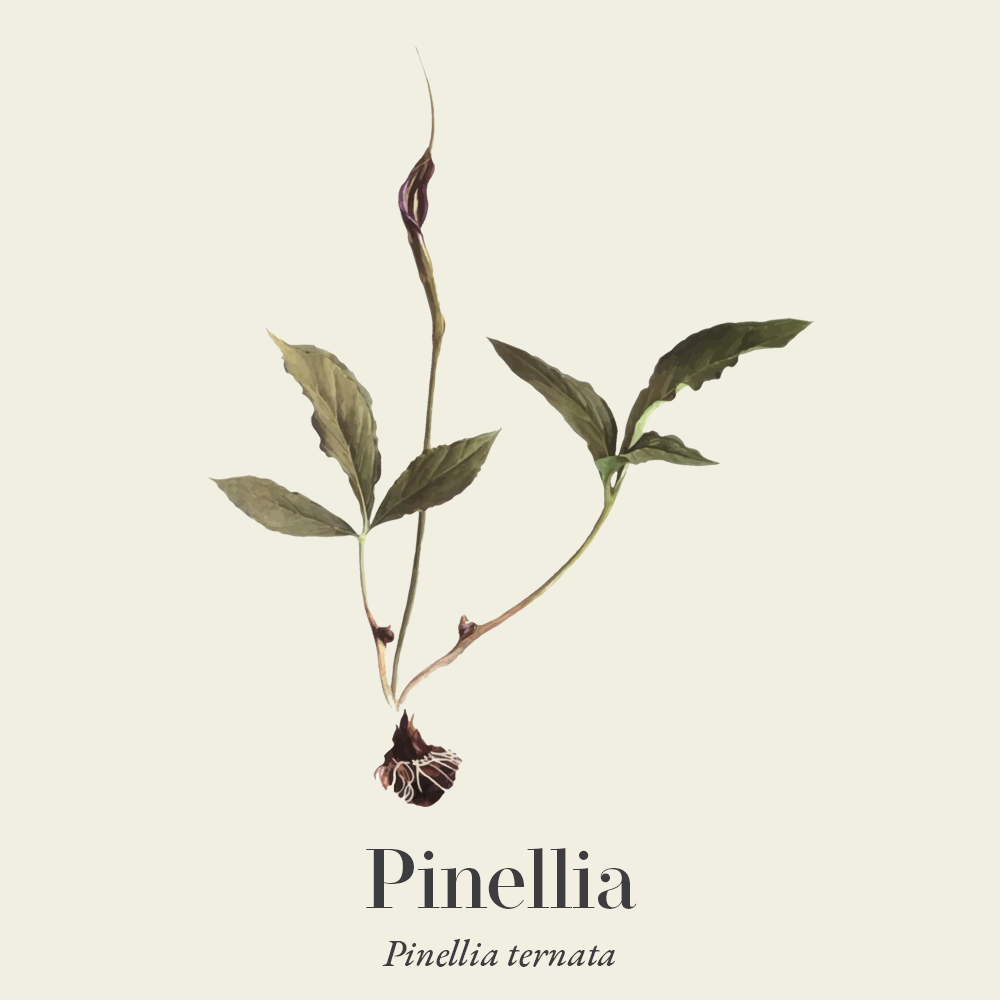
-
Habitat
Native to China, Japan and Korea (36). The natural habitat of the wild species is grassland, secondary forest, and disturbed ground up to 2,500 m altitude (37). Changes in land use and farming practices have led to changes in the wild microenvironment of pinellia ternata and wild resource populations have been greatly reduced or depleted, making cultivated forms the main source (10).
-
Sustainability

Not currently on risk lists but complete data may be missing on the status of the species. Read more in our sustainability guide. Despite the aforementioned changes to habitat, pinellia is not listed on IUCN redlist nor on Natureserve as a threatened species (37,38). Due to declining wild populations, it is recommended to source cultivated forms of the plant where possible to protect the declining species (39).
Habitat loss and over-harvesting from the wild are two of the biggest threats faced by medicinal plant species. There are an increasing number of well-known herbal medicines at risk of extinction. We must, therefore, ensure that we source our medicines with sustainability in mind.
The herb supplement industry is growing at a rapid rate and until recent years a vast majority of medicinal plant produce in global trade was of unknown origin. There are some very real and urgent issues surrounding sustainability in the herb industry. These include environmental factors that affect the medicinal viability of herbs, the safety of the habitats that they are taken from, as well as the welfare of workers in the trade.
The botanical supply chain efforts for improved visibility (transparency and traceability) into verifiably sustainable production sites around the world is now certificated through the emergence of credible international voluntary sustainability standards (VSS).
Read our article on Herbal quality & safety: What to know before you buy and Sustainable sourcing of herbs to learn more about what to look for and questions to ask suppliers about sustainability.
-
Quality control
Herbal medicines are often very safe to take; however, their safety and efficacy can be jeopardised by quality issues. So, it is important to buy herbal medicines from a reputable supplier, from sources known to test their herbs to ensure there is no contamination, adulteration or substitution with incorrect plant matter, as well as ensuring that recognised marker compounds are at appropriate levels in the herbs.
Some important quality assurances to look for are certified organic labelling, the correct scientific/botanical name, and the availability of information from the supplier about ingredient origins. A supplier should be able to tell you where the herbs have come from, what contaminants are not in the herb, and what the primary compounds are.
Common adulterants include Typhonium flagelliforme and Pinellia pedatisecta, which are both closely related and easily confused (39). They can be differentiated by the fact that T. flagelliforme has tapered rhizomes on one or both ends, the apical depression is usually absent and root scars are scattered over the entire surface rather than localised around the apex. P. pedatisecta may be differentiated if the mature rhizomes are used because they tend to be larger (up to 4 cm diameter, compared to 1.5 cm for the official species) and may have one or more smaller daughter rhizomes developing around the perimeter. Immature rhizomes may be indistinguishable and require laboratory identification.
-
How to grow
Pinellia ternata root prefers mild, humid climates. It dislikes drought, and high temperatures which should be avoided when cultivating (10).
-
Recipe

Pinellia root (Pinellia ternata) Two-aged decoction
Two Aged Decoction (Er Chen Tang) is one of the most fundamental formulas for treating phlegm in Chinese medicine and is used as the basis for dozens more recipes that modify this to address specific circumstances (7). Its name derives from the fact that the first two ingredients are usually treated by ageing to reduce toxicity and improve their therapeutic effect.
On its own, it treats cough with white sputum, distention and a stifling feeling in the chest, nausea or vomiting, but with slight modifications, it has been the basis for the treatment of drooling, diarrhoea, stomach pain, insomnia, hypersomnia, menstrual disorders, infertility, emotional constraint and others. However, due to the drying nature of its ingredients, it should not be used where there is fluid (yin) deficiency.
Ingredients
- 5 g Prepared pinellia rhizome (Pinellia ternata)
- 5 g Aged citrus peel (Citrus reticulata)
- 3 g Poria (Poria cocos)
- 1.5 g Honey fried liquorice root (Glycyrrhiza glabra)
How to make a two-aged decoction with pinellia
Prepare as a decoction by placing all ingredients in a pan and gently simmer for 10 minutes. The original formula decocts the ingredients with fresh ginger and one piece of black plum (Prunus mume), which helps to protect the stomach and fluids when used alone. When using this formula as the basis for developing a more complex treatment strategy, these are usually omitted and other herbs incorporated to achieve the desired effect.
Pinellia decoction to drain the Epigastrium
Pinellia decoction to drain the Epigastrium (Ban Xia Xie Xin Tang) is an essential and versatile formula for resolving complex patterns of simultaneous deficiency and constraint that cause dampness and heat to combine in the Stomach. This causes a distended, blocked sensation in the epigastrium with possible nausea, vomiting and diarrhoea. It is often used in modern clinics for a variety of digestive disorders, such as gastritis, peptic ulcers, reflux disorder, chronic cholecystitis, diarrhoea, ulcerative colitis, irritable bowel syndrome, hepatitis and morning sickness, along with other disorders that may fit a damp-heat pattern such as hyperthyroidism, chronic asthma, conjunctivitis, heart disease, amenorrhoea, insomnia, stress and depression (2,7).
Ingredients
- 9–12 g Prepared pinellia rhizome
- 9 g Dried ginger (Zingiber officinale)
- 9 g Baical skullcap root (Scutellaria baicalensis)
- 3 g Chinese goldenseal rhizome (Coptis chinensis)
- 9 g Ginseng root (Panax ginseng)
- 4–12 pieces Jujube fruit (Ziziphus jujuba )
- 6–9 g Honey fried liquorice root (Glycyrrhiza glabra)
How to make a pinellia decoction to drain the Epigastrium
Decoct the ingredients in water and divide into three doses taken over the course of a day.
This formula can be easily modified to meet a variety of situations:- Where the weakness of the digestive system is more pronounced, with undigested food in the stool, the dose of liquorice can be increased to 12 g.
- Where the epigastric distention is more pronounced and palpably firm, 12 g of fresh ginger can be added to help warm the Stomach and disperse fluids.
- Another variation uses 12–15 g of raw liquorice instead of the honey fried variety to treat stubborn erosive skin conditions, especially around the mouth, anus and throat. Modern interpreters consider this to be a description of Behcet’s syndrome or sexually transmitted infections (22).
- Replacing Chinese goldenseal with Bupleurum (Bupleurum chinense) and swapping dried ginger for fresh ginger, changes the formula to become Lesser Bupleurum Decoction (Xiao Chai Hu Tang) which is a pivotal formula in Chinese medicine, used to treat an even wider range of disorders. It is especially useful in the treatment of “strange diseases” which have unusual presentations that are difficult to match with standard patterns (7). These indicate a disruption of the general dynamic of the body, producing symptoms that may manifest in different ways at different times, and compared to psychosomatic disorders in Western medicine.
-
References
- Bensky D, Clavey S & Stoger E. Chinese Herbal Medicine: Materia Medica, 3rd Edition. Seattle: Eastland Press. 2004.
- Chen JK & Chen TT. Chinese Medical Herbology and Pharmacology. City of Industry: Art of Medicine Press. 2004.
- Fruehauf H. Single Herbs: Banxia (Pinellia ternata). 2015. https://classicalchinesemedicine.org/single-herbs-banxia/ . Accessed June 12, 2025.
- Köhle, N. A Confluence of Humors: Āyurvedic Conceptions of Digestion and the History of Chinese “Phlegm” (tan 痰). J. Am. Orient. Soc. 2016;136(3), 465. https://doi.org/10.7817/jameroriesoci.136
- Clavey S. Fluid Physiology and Pathology in Traditional Chinese Medicine, 2nd Edition. Churchill Livingstone. 2002.
- Sung, YM. Understanding the Jin Gui Yao Lue: A Practical Textbook. Beijing: People’s Medical Publishing House. 2008.
- Scheid V, Bensky D, Ellis A, Barolet R. Chinese Herbal Medicine: Formulas & Strategies 2nd edition. Seattle: Eastland Press. 2009.
- Chen JK & Chen TT. Chinese Herbal Formulas and Applications. City of Industry: Art of Medicine Press. 2015.
- Bai J, Qi J, Yang L, Wang Z, Wang R, Shi Y. A comprehensive review on ethnopharmacological, phytochemical, pharmacological and toxicological evaluation, and quality control of Pinellia ternata (Thunb.) Breit. J Ethnopharmacol. 2022;298:115650. https://doi.org/10.1016/j.jep.2022.115650
- Zou T, Wang J, Wu X, et al. A review of the research progress on Pinellia ternata (Thunb.) Breit.: Botany, traditional uses, phytochemistry, pharmacology, toxicity and quality control. Heliyon. 2023;9(11):e22153. Published 2023 Nov 14. https://doi.org/10.1016/j.heliyon.2023.e22153
- Xiong X, Wang P, Su K, Cho WC, Xing Y. Chinese herbal medicine for coronavirus disease 2019: A systematic review and meta-analysis. Pharmacol Res. 2020;160:105056. https://pubmed.ncbi.nlm.nih.gov/32622723/
- Shu Z, Zhou Y, Chang K, et al. Clinical features and the traditional Chinese medicine therapeutic characteristics of 293 COVID-19 inpatient cases. Front Med. 2020;14(6):760-775. https://pubmed.ncbi.nlm.nih.gov/32926319/
- Weng J, Wu XF, Shao P, Liu XP, Wang CX. Medicine for chronic atrophic gastritis: a systematic review, meta- and network pharmacology analysis. Ann Med. 2023;55(2):2299352. https://pubmed.ncbi.nlm.nih.gov/38170849/
- Lin YH, Chen C, Zhao X, et al. Efficacy and Safety of Banxia Formulae for Insomnia: A Systematic Review and Meta-Analysis of High-Quality Randomized Controlled Trials. Evid Based Complement Alternat Med. 2021;2021:8833168. Published 2021 May 26. https://onlinelibrary.wiley.com/doi/10.1155/2021/8833168
- Lin, S., Chen, H., Nie, B. et al. Raw Pinelliae Rhizoma: examination of sedative and hypnotic effects in mice and chemical analysis. Sleep Breath 27, 1143–1153. 2023. https://pubmed.ncbi.nlm.nih.gov/36166133/
- Kim YJ, Shin YO, Ha YW, Lee S, Oh JK, Kim YS. Anti-obesity effect of Pinellia ternata extract in Zucker rats. Biol Pharm Bull. 2006;29(6):1278-1281. https://pubmed.ncbi.nlm.nih.gov/16755034/
- Shao J, Li C, Bai L, et al. Recent evidence in support of traditional chinese medicine to restore normal leptin function in simple obesity. Heliyon. 2022;8(5):e09482. Published 2022 May 19. https://pubmed.ncbi.nlm.nih.gov/35620623/
- Food and Drug Administration. Final Rule Declaring Dietary Supplements Containing Ephedrine Alkaloids Adulterated Because They Present an Unreasonable Risk. 2004. https://www.federalregister.gov/documents/2004/02/11/04-2912/final-rule-declaring-dietary-supplements-containing-ephedrine-alkaloids-adulterated-because-they. Accessed June 12, 2025.
- Su T, Tan Y, Tsui MS et al. Metabolomics reveals the mechanisms for the cardiotoxicity of Pinelliae Rhizoma and the toxicity-reducing effect of processing. Sci Rep 2016; 6, 34692. https://www.nature.com/articles/srep34692
- Fang L, Xie J, Lin L, Tian M, Row KH. Multi-phase extraction of ephedrine from Pinellia ternata and herbal medicine using molecular imprinted polymer coated ionic liquid-based silica. Phytochem Anal. 2020;31(2):242-251. https://analyticalsciencejournals.onlinelibrary.wiley.com/doi/10.1002/pca.2888
- Medicines and Healthcare Regulatory Agency. List of herbal products. https://assets.publishing.service.gov.uk/media/5a806f79ed915d74e622e6f6/List-of-herbal-products.pdf . Accessed June 17, 2025.
- Fruehauf H. Gancao Xiexin Tang: Pinellia Purge the Heart Decoction: A Forgotten Key Remedy for the Treatment of Toxic Skin Conditions. 2010. https://classicalchinesemedicine.org/wp-content/uploads/2016/03/fruehauf_gcxxtENG.pdf. Accessed June 11, 2025.
- Peng W, Li N, Jiang E, et al. A review of traditional and current processing methods used to decrease the toxicity of the rhizome of Pinellia ternata in traditional Chinese medicine. J Ethnopharmacol. 2022;299:115696. https://pubmed.ncbi.nlm.nih.gov/36087845/
- Liu Y, Ota M, Fueki T, Makino T. Historical Study for the Differences of Processing of Pinellia ternata Tuber Between China and Japan. Front Pharmacol. 2022;13:892732. Published 2022 Jun 20. https://www.frontiersin.org/journals/pharmacology/articles/10.3389/fphar.2022.892732/full
- Fueki T, Tanaka K, Obara K, Kawahara R, Namiki T, Makino T. The acrid raphides in tuberous root of Pinellia ternata have lipophilic character and are specifically denatured by ginger extract. J Nat Med. 2020;74(4):722-731. https://pubmed.ncbi.nlm.nih.gov/32591979/
- Fueki T, Nose I, Liu Y, Tanaka K, Namiki T, Makino T. Oxalic acid in ginger specifically denatures the acrid raphides in the unprocessed dried tuber of Pinellia ternata. Acu. Herb. Med., 2022, 2(1): 33‒40. https://journals.lww.com/ahm/fulltext/2022/03000/oxalic_acid_in_ginger_specifically_denatures_the.4.aspx
- Taiwan Herbal Pharmacopeia 4th Edition, English Version. Taiwan: Ministry of Health of Welfare. 2022.
- National Center for Biotechnology Information. PubChem Compound Summary for CID 305, Choline. https://pubchem.ncbi.nlm.nih.gov/compound/Choline . Accessed June 11, 2025.
- Yang Y, Yuan L, Liu W, et al. Banxia-Shengjiang drug pair inhibits gastric cancer development and progression by improving body immunity. Medicine (Baltimore). 2024;103(10):e36303. https://link.springer.com/article/10.1007/s10753-014-0054-4
- Niu X, Zhang H, Li W, Mu Q, Yao H, Wang Y. Anti-inflammatory effects of cavidine in vitro and in vivo, a selective COX-2 inhibitor in LPS-induced peritoneal macrophages of mouse. Inflammation. 2015;38(2):923-933. https://link.springer.com/article/10.1007/s10753-014-0054-4
- Liang Z, Wei J, Chan S, et al. Pinelliae Rhizoma: a systematic review on botany, ethnopharmacology, phytochemistry, preclinical and clinical evidence. Chin J Nat Med. 2025;23(1):1-20. https://doi.org/10.1016/S1875-5364(25)60807-7
- DrugBank. Allantoin. 2025. https://go.drugbank.com/drugs/DB11100 . Accessed June 12, 2025.
- National Center for Biotechnology Information. PubChem Compound Summary for CID 5281605, Baicalein. https://pubchem.ncbi.nlm.nih.gov/compound/Baicalein . Accessed June 11, 2025.
- Fisher Scientific. 3,4-Dihydroxybenzaldehyde, 98%. Available from: https://www.fishersci.se/shop/products/3-4-dihydroxybenzaldehyde-98-thermo-scientific/p-7081539 . Accessed June 11, 2025.
- Chen JH, Cui GY, Liu JY, Tan RX. Pinelloside, an antimicrobial cerebroside from Pinellia ternata. Phytochemistry. 2003;64(4):903-906. https://pubmed.ncbi.nlm.nih.gov/14559289/
- Brown D. Royal Horticultural Society Encyclopedia of Herbs. London: Dorling Kindersley. 2008.
- NatureServe. Pinellia ternata. Natureserve.org. Published 2025. Accessed July 9, 2025. https://explorer.natureserve.org/Taxon/ELEMENT_GLOBAL.2.138438/Pinellia_ternata
- IUCN Redlist. Pinellia ternata. Published 2025. https://www.iucnredlist.org/search?query=pinelllia%20ternata&searchType=species
- Ding X, Song Q, Hu W. Research Progress of the Wild Medicinal Plant, Pinellia ternata. Journal of Clinical and Nursing Research. 2021;5(4):12-16. https://doi.org/10.26689/jcnr.v5i4.2246
- Leon C, Lin, YL. Chinese Medicinal Plants, Herbal Drugs and Substitutes: an identification guide. Royal Botanical Gardens, Kew: Kew Publishing. 2017.

